If you’re an artist who has been around NFTs for a minute but aren’t considered “blue chip” - what’s this year looking like for you? I’m going to take a second to offer some thoughts on the current scene, the market, and toss out some potential strategies.
Current Scene: Fragmented
For one thing - everything everywhere is getting harder to track. With the advent of services like Manifold to create contracts, it seemed like every marketplace developed their own function for artists to create their own smartcontracts for their own collections. On the one hand this is great! Artists’ work can be assessed from other platforms, metrics like volume and floor prices and total supply all make sense now compared to when an artists’ work was just some token IDs on a shared smartcontract with a larger marketplace like Superrare or Makersplace.
On the other hand, however, being able to show volume for a particular portal is much more complicated: should the volume of a marketplace be all the contracts created there that are bought and sold there? Should it be tokens from contracts created elsewhere that happen to be bought or sold on their marketplace but didn’t originate there? If an artist is doing really well - won’t their sales be distributed across different actual storefronts and confuse the metrics of any one place they are being bought? With contracts no longer being tied to storefronts (which in theory, they were not before either - it just took more effort for collectors), it’s beginning to feel a little anarchic and untraceable.
All that to say - the metrics that made sense to measure a year or two ago seem difficult to pin down now. What looks like just a tiny trickle of volume may be more, but just spread out. That is - for example, if you look at one of my collections on KnownOrigin or Makersplace it might look like I’m not selling anything lately, but you’d have to go to my Zora or custom Manifold contract to see a different story. It could also be that smaller artists looked better when they shared a contract with the big names that were buoying the overall smartcontract volume - how much buying and selling is going on with smaller projects that have less mindshare? Obviously not as much as the few artists whose work is changing hands at 10x the value of the small one and doing so every week or even every day. If an artist creates a new contract for each project they work on - how do we assess neatly the average value that artist demands. By contract? By particular piece? We have found a way to be more precise about what tokens we are looking at and what they are worth on the open market, but it could be that having done that we’ve blown away the smokescreen of success to see the much more ordinary amounts that the average or even sub-average artist can command.
Volume and Reasonable Expectations
It’s hard to say exactly what the typical crypto artist expects for returns on their work these days. Some artists seem clear-eyed, aware, and have some idea of what the general atmosphere is. Some artists have their head down most of the time working and only pop up to guess at whether their newest project will succeed. Newcomers to the space generally seem really confused at valuation, reputations, networking, and just in general the mechanics and tech of tokenization.
The artists who have their heads down have a lot of respect from me - of course, our vocation is to create art and not to conduct market research. That said, I’ll take a look at some kinds of data that might be relevant.
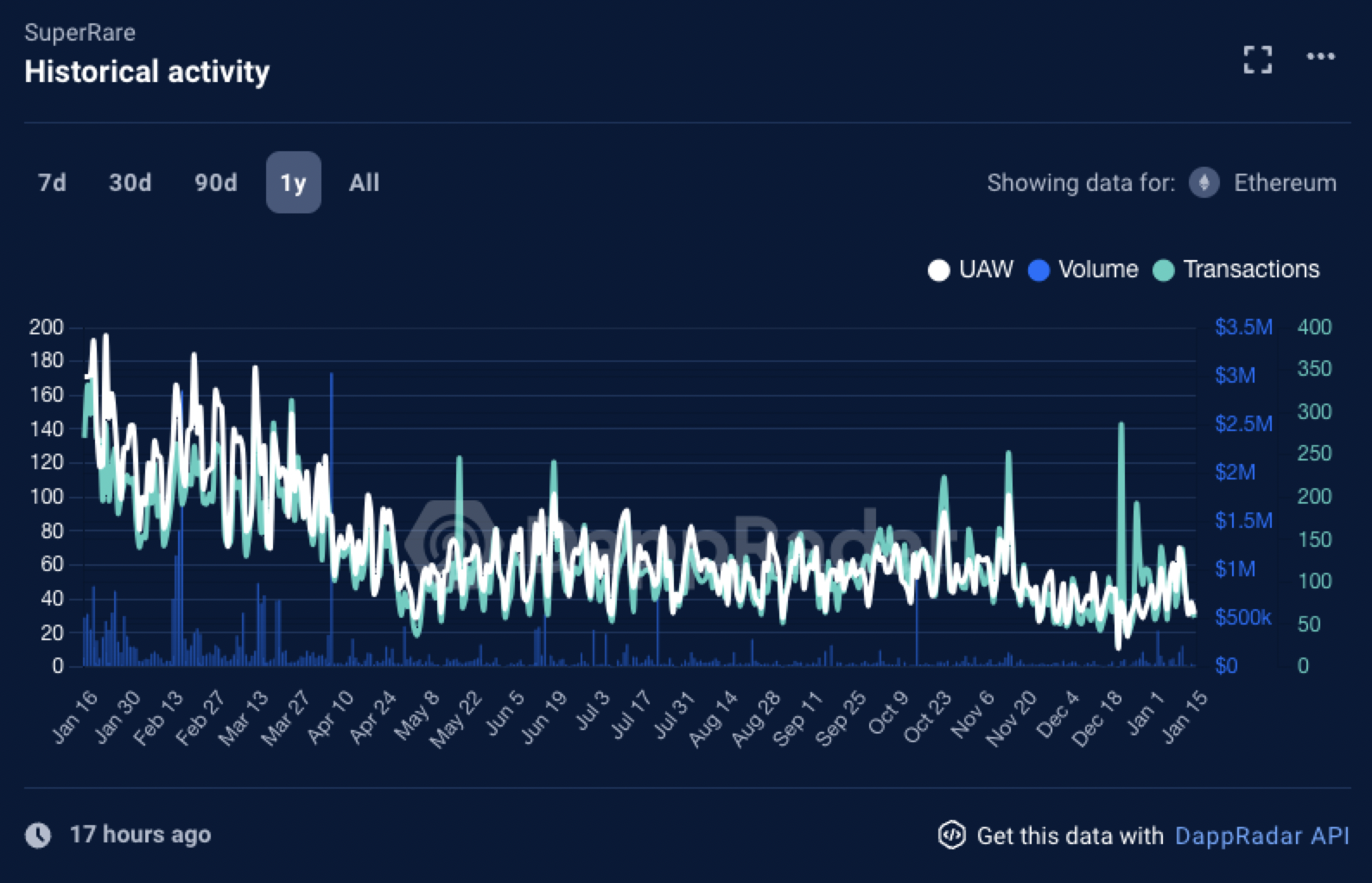
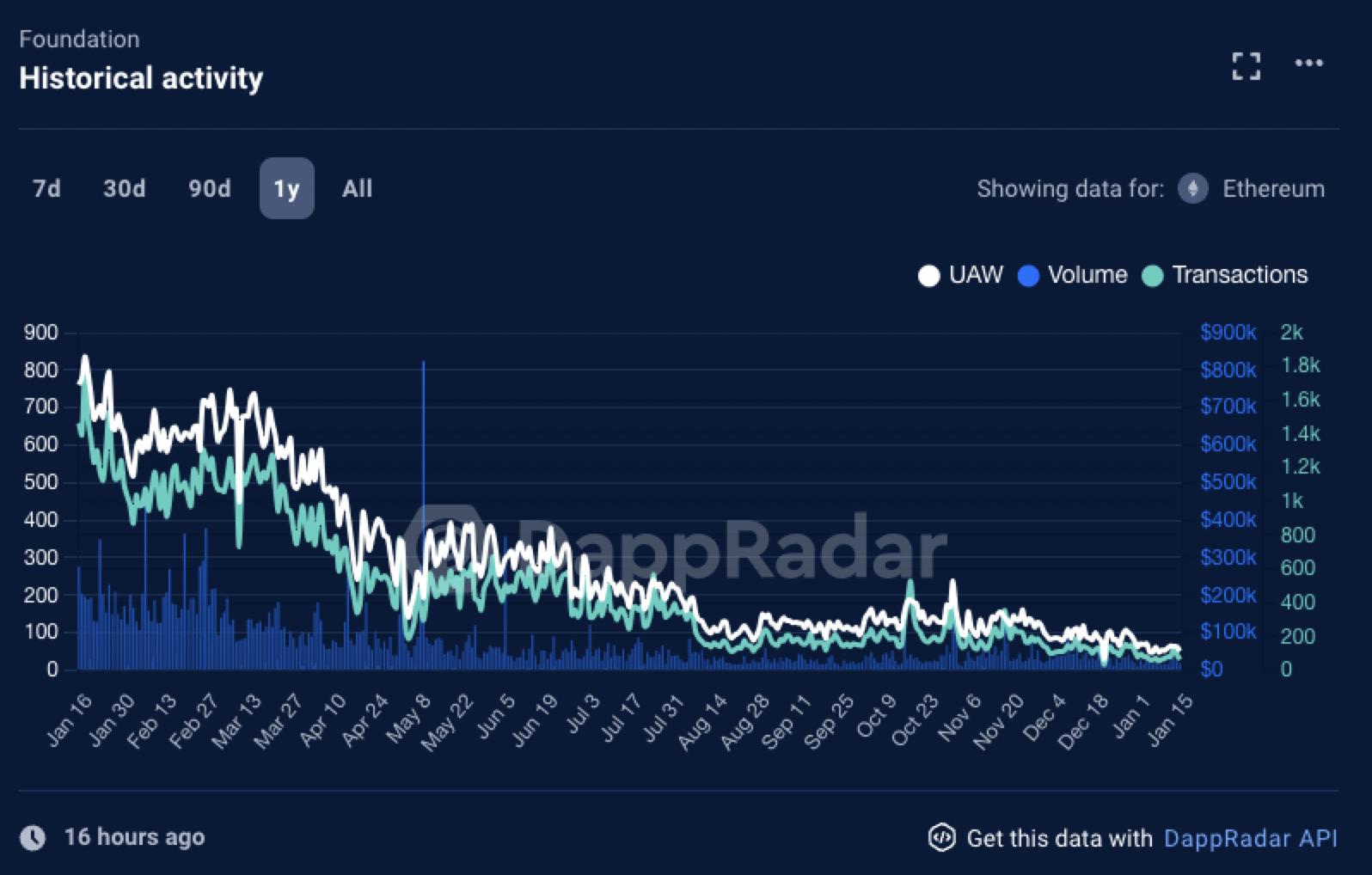
Minting on Eth mainnet seemed a little cheaper, at least for a while there in 2023, but it’s still nothing to sneeze at - especially if you’re asking what you can ask for a piece that cost $20 or more just to mint. Consider, though, the kind of money changing hands at giants like SuperRare and Foundation - both marketplaces down considerably in volume. Millions of dollars down to hundreds of thousands for SuperRare, hundreds of thousands down to tens of thousands for Foundation. It’s not about being bleak - it’s about asking a non-famous artist how much they expect to make as a piece of one of those pies that are considerably smaller than they were even just a year ago.
The Death of the Middle Class
My current theory is that the “middle class” of NFT artists is slowly dying out. That is to say, sincere collectors and speculators alike are going to be polarized into two positions: art that is expensive from a famous artist that may appreciate in value and art that is cheap from a relatively unknown artist that may or may not appreciate in value. It’s not that hard to grasp, really - if we just think of real world fine art: even if someone has the money they probably won’t spend fine-art money on a relatively unknown artist. They may spend a lot on a famous artist even if they have no intention of flipping it for profit, just because it feels like an act of cultural acumen to own and enjoy it. They may buy lots of relatively cheap art from artists who are relatively unknown because they like it, or on the off-chance that person ends up becoming very popular years or generations from now. What a person will probably not do is buy expensive art that is by someone relatively unknown on the off-chance of fame. It was perhaps the general novelty froth of the 2020/2021 market that led to people buying up this new asset and new medium for art like mad, and not a sustainable thing.
On the other hand, I could be wrong about all this. It could be that there was always a larger art market for digital art than we realized - but there was no ownership format agreed upon (like tokens) and no global marketplace (crypto) that connected these aesthetic goods with buyers. It could be that we’ve seen the birth of an internet of digital goods that just hasn’t quite reached maturity and like any token pair launch we’ve witnessed the initial insane spike and dump followed by a slow growth back from near-zero. Maybe there’s room for a middle class again. Who knows?
If I’m right, though - about the death of the middle class - we can expect two things to take off as new meta. Lots of virtually free art on the one side, and an increasingly sophisticated market for art as a luxury good on the other. Sealed.art is doing an amazing job of building new AI-assisted search tools to help curious collectors discover art they genuinely love from across marketplaces and refine even further their sensibility for what to collect and from whom.
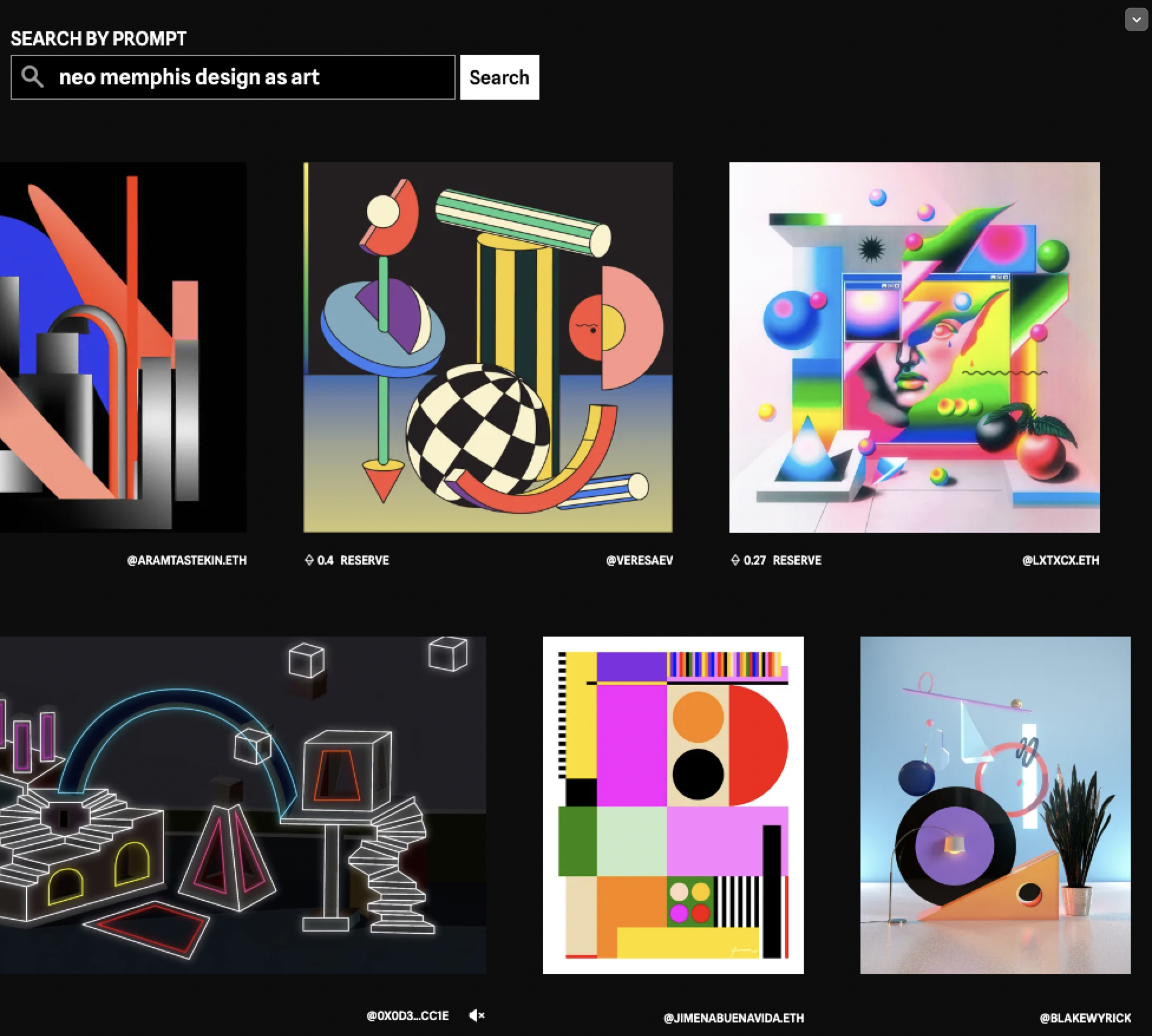
One quick note on AI-generated art: it will absolutely fill to the brim every corner of the market that isn’t too expensive to mint to or barred by gatekeepers. The Optimism art contest entries I was looking through, since they allowed minting on L2 chains (cheap) there was an almost limitless number of submissions of AI generated pieces - even in categories that were explicitly not for AI or were for generative art that wasn’t AI rendered. The lesson to take from this isn’t necessarily to never use any AI art for anything (although I personally use virtually none) but just to remember that unlike the early days of NFTs where you at least had to be able to grab and hack together an image - there is going to be a ready supply of near infinite renderings in any place where the market upside is enough to make spamming that art profitable. Setting your AI-generated pieces apart as something unique or better than the elemental force of visuals that has been birthed is going to be very very difficult.
New Strategies
So, what are people trying now since it seems like some of the old cups that used to overfloweth are running dry? Let me point out a few significant changes and novelties in the NFT art space. For one thing, generative art is being made more public. Fxhash.xyz is pivoting from Tezos only to Eth and Tezos, and since they’re sort of self-service it means that releases are going to flood in, no longer gated by the onboarding and support process that platforms like Artblocks manage for their creators. Same goes for new BTC ordinal markets like generative.xyz for generative art, except gas prices are going to make both ETH and BTC options expensive for newcomers. L2 tokens on Base or Zora chain actually seem to be selling here and there for significant amounts - has the stranglehold for value consensus that Eth had weakened a little? As the hurdles for entry get shorter and shorter, will we see a bloom of good new work or will the potential supply flood with cheap minting fees suddenly burn out collectors? Who knows?
So is it worth it for artists to try free mints on L2? Zora is incentivizing it right now by essentially paying you the platform fee for creating claims there. Did it work for me? Yes and no. I had the good fortune of being promoted for a mint by DWR from Warpcast and Kugusha from Gallery and some fans of the DYWTFS project promoted my mint until it was in the top 4 for 24 hours for a day or so. That led to around 800 mints - which is an awful lot by my standards (and most people’s) and frankly I can’t command that kind of attention with my own twitter/warpcast following by itself. Still, though, when DWR tweeted about it and shared through warpcast (with direct “mint with warp” inside the app) it still took until multiple people on twitter shared to start to take off. By the numbers, DWR had about 85k followers on twitter at the time, and being the founder and dev of Warpcast had another 45k there. Since that time Warpcast has exploded. Gallery.io posting on twitter about it has another 25k followers - so you’re looking at a reach of around 100k people or so, give or take - not including the myriad other friends and followers who shared. Most artists have nowhere near this kind of following - even if they rode through 2020-2024 and were successful in their own lane. So at about 10x my following it was looking to be worth $130 for a couple days of work on a nice piece before it got to the front page and then became something more like $800 for a couple days. By my standards, this is good pay - but can I make it to the front page of Zora trending each time I spend a few days on a piece? I cannot. The average artist cannot. Warps with mints inside Warpcast may be a good way to get an initial flurry of mints, but it’s probably not sustainable if you need to repeat that performance over and over to make it worthwhile. The discovery feed is fun to watch on Zora, but at best an average artist can only expect a trickle from it - and only that if they aggressively post about their piece short of annoying everyone enough to mute them. All that to say: the Zora free mint meta may look better than it is because it works once in a while for a few people - but probably won’t work consistently for any one person, especially if they aren’t super famous.
Subscription services like Warpcast native Jonny Mack’s hypersub.withfabric.xyz or sealed.art/subscriptions are trying out a new model. What if you didn’t have to compete in a pvp marketplace at ‘Buy Now’ prices or auctions to guarantee a stream of art from your favorite creators? What if as a creator you don’t have to guess what art will sell for or worry whether you can sell the next thing you’re devoting time to? It could be that relaxed expectations for both sides will prove a little more sustainable and healthy relationships can be built. It could be that collectors prefer to effectively DCA into artists rather than feast and fast, and artists may end up enjoying creating as a regular habit rather than panic to create and then beg for sales.
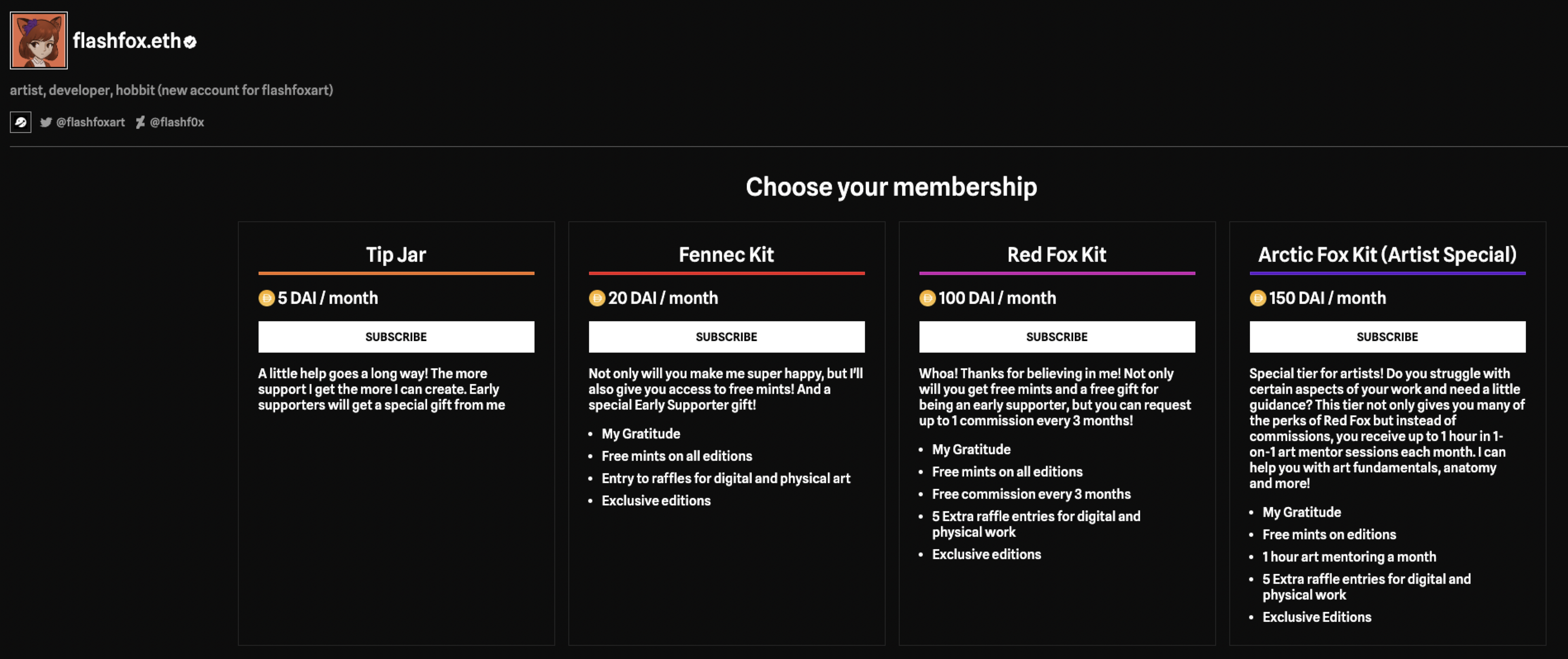
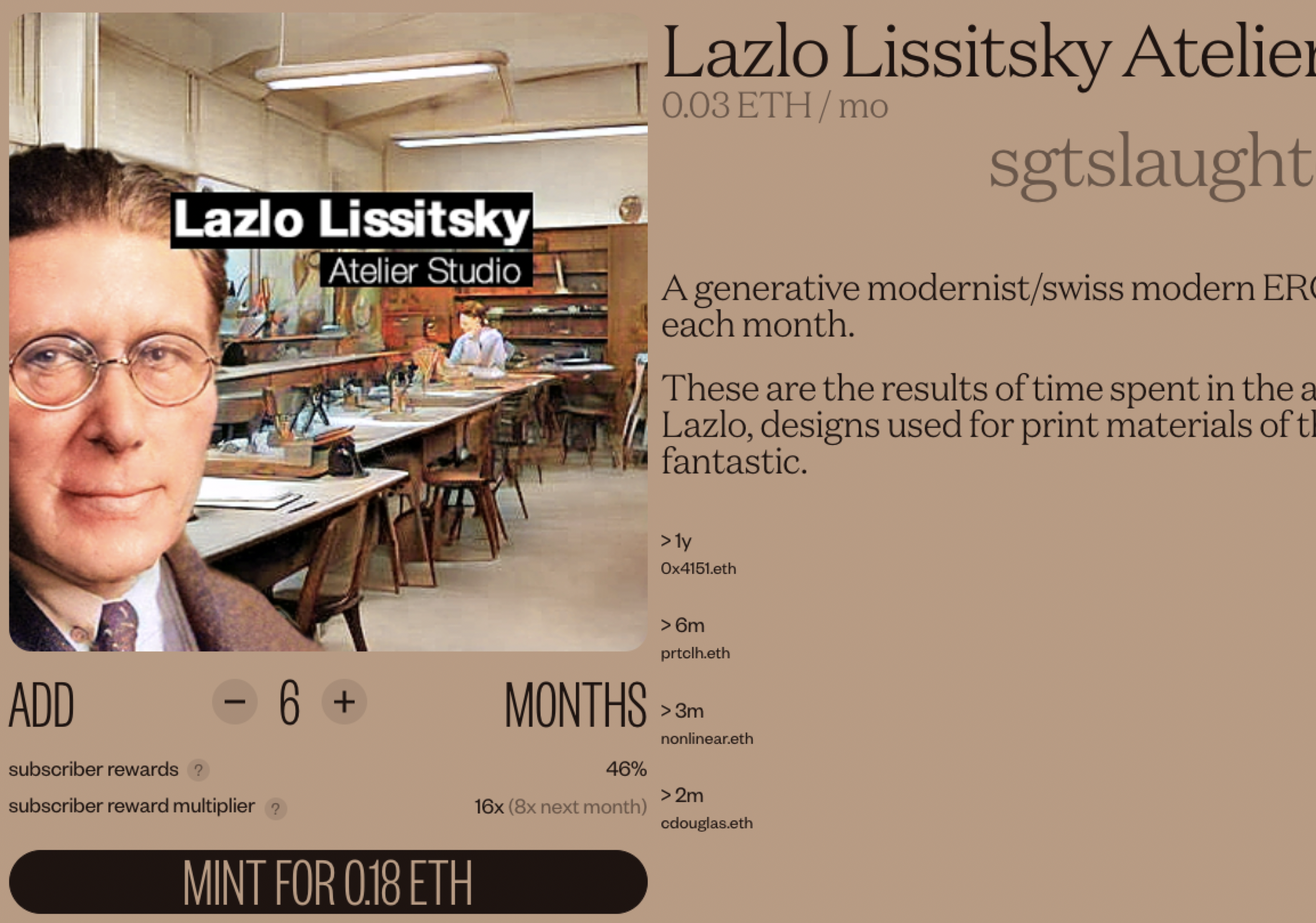
Also, as more tools for managing DAOs and controlling their membership and governance are created and refined, NFTs that have a readymade audience of investors in projects or tokens may be more worthwhile to create for. This is one of the interesting conundrums; in 2021 it felt very much like “community” was what was created after people bought into a collection. It could be that 2024 will see more communities that already exist creating things together and managing their own “product.” In that sense: it would be smart for artists to look for communities that need art rather than try to create one around their art. This may sound awfully mercenary or frankly just like having a design job again, but if the question is “what are people buying in the NFT markets” that’s where the market may be. I recently did the Degen Haberdashers collection specifically because a DAO community manager put out a request for artists to help make some NFTs.
Another thing that has suddenly skyrocketed is ERC404 or DN404 tokens - functionally liquid NFTs paired with ERC20 tokens - art coins that can be swapped and burned for the art itself. Some marketplaces are already pointing out that these ruin a lot of standard ERC721/1155 etc functions - but people are anxious to try new paradigms. With async.art having closed not so long ago, it seemed for a minute like NFTs were settling into a just a few formats that people understood and could quantify. The thing that is surprising is that novelty seems to have come back into vogue for a minute - but what kind of novelty? Did the Pandora’s box NFT do well because it was in a new format or because it was similar to loot box gambling? Did DeFrogs leverage that novelty without quite the same mystery box mystique or are they just coasting on the DeGods latecomer FOMO in the wake of the Solana resurgence? More than that - how could the average artist even hope to create a 404 collection without a developer working side-by-side with them? Those tools will probably exist soon. The question is whether DN404 makes any sense for things that aren’t larger collections. Would it make sense to mint a series of 16 serious artworks in DN404? Probably not.
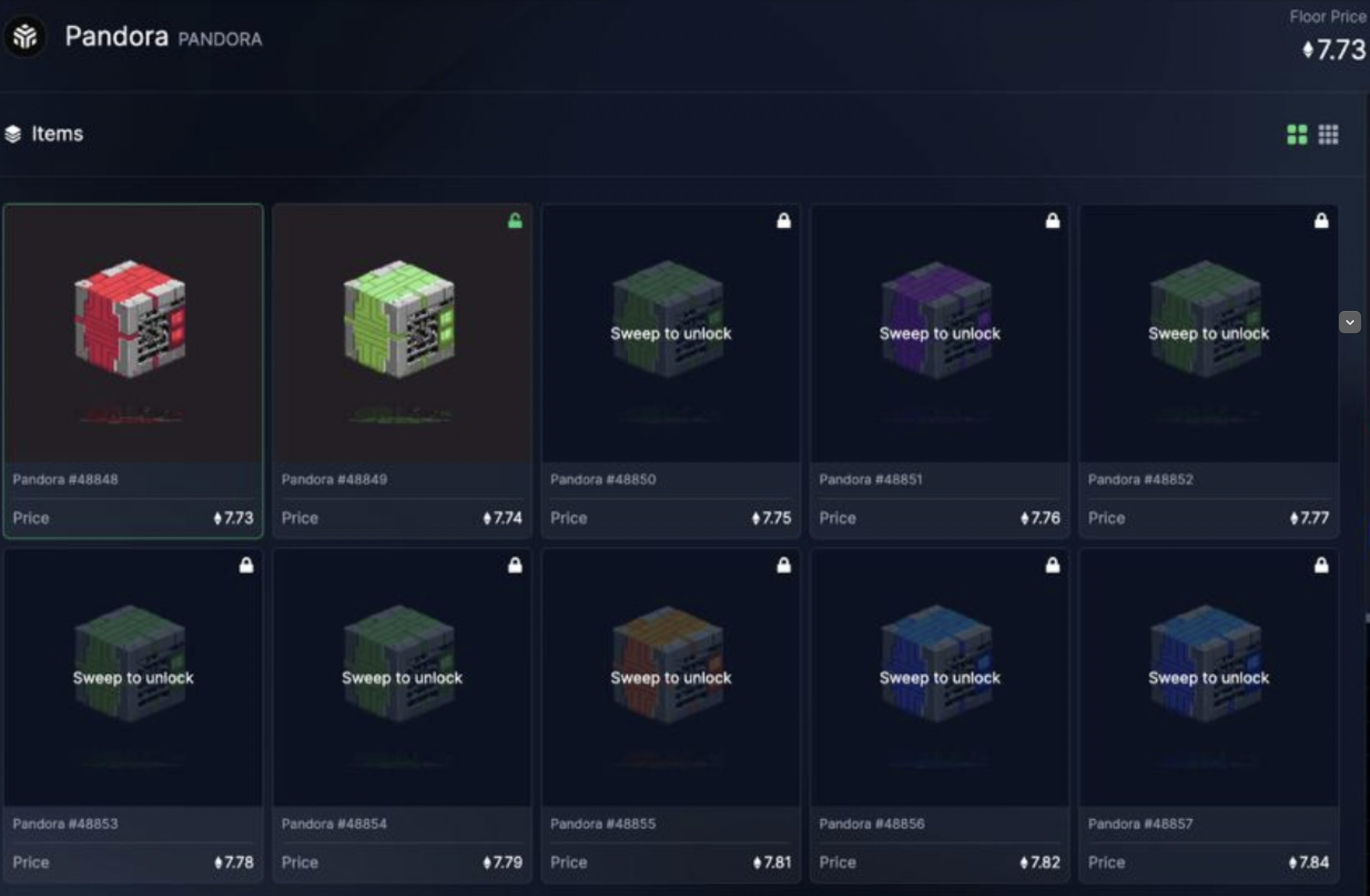
My last suggestion I can make is for artists to consider very carefully how to build the body of art they want to sell. It could be that collectors are just bored of standard storefronts, standard experiences. When you’re talking about the collectors who aren’t in the game for a quick flip - the ones who want to seek out some kind of new collecting interactions and new ways to think about NFTs, maybe the best move is to just try something you haven’t seen done to the limit of your ability. All too often this ends up in knotted contract interactions, complex systems of token staking / derivative airdropping / user remix experiences that people get bored of. How can you tell when something is going to be boring because the learning curve to use it is too steep? How can you tell when the technical lift for your idea would require a team of solidity developers and front-end magicians that you just can’t afford? My encouragement would be to think of what it is that you want to do artistically that hasn’t been done and only then sort out the mechanics of it. Complex interactions that you think of and then try to reverse-engineer into art are almost always going to be boring.
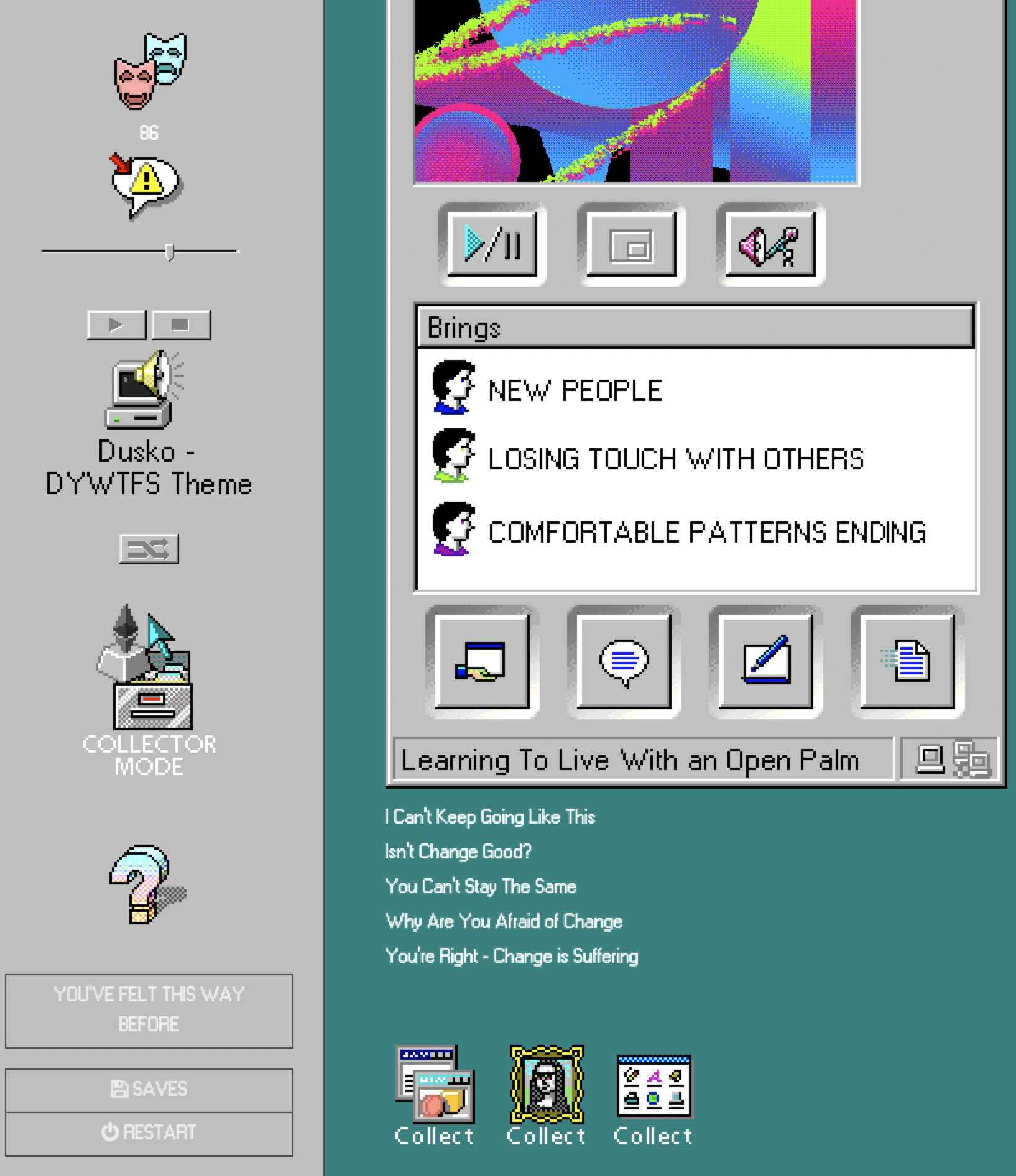
As usual, the main suggestion I can make is for artists to consider the ability to scale as paramount. If you do the thing you want to do to make artful NFTs - does success mean you are being paid well enough to keep doing it? That’s the question; is it possible to succeed doing this thing you enjoy in the way that you are doing it.
Epilogue: The 2024 Tezos Context (skip this if you are not a tezos die-hard artist)
I have a considerable amount of friends - consummate artists - who were swept up in the Hic Et Nunc craze that eventually transmogrified into objkt.com and Teia, who insist on still using Tezos chain NFT marketplaces and creation tools. The same went for Tezos last year (and 2022, really), shared contracts become custom contracts - shared volume started being narrowed into particular collections.
Before I even address that marketplace - I’ll use this DefiLlama chart to point this out - Tezos itself - all of Tezos as a chain, has likewise gone from hundreds of thousands to tens of thousands - seeing a little more life and edging on $100k volumes again this last month or so (December 2023). The point here is that if NFT activity is only a part of a chain’s draw, and Tezos has that little volume each month - take these hundreds of thousands and make them hundreds of millions and you’re starting to see the kind of volume you see on Ethereum Layer 2s - not even mainnet. Artists on Tezos do great work, I would never denigrate that, but they are becoming brilliant artists selling their work in a slum where less and less aristocratic tourists visit.


Let’s say, though, that you’re a man of culture like myself (lol) - so to speak. You have a nice Tezos collection, you’ve made several yourself - and even if all your developer friends hate it, it has a soft spot in your heart. Gas is so cheap! Why not just make something there for giggles? That’s fine. Remember, though, that OBJKT.com is likewise down in volume from around $100k total volume in January 2022 to around $20k in volume in December/January.
What does that mean on a concrete level for artists? I’m not sure, but to hazard a wild guess - there’s 2,366,866 users on OBJKT.com - let’s say that 1/5 of those is a creator (just guessing). Further, let’s say 1/5 of those artists uses multiple accounts - so we’ll subtract that much - that makes 378,700 creators or so. At the beginning of the year if they each got an equal share of the total platform volume they’d make 30 cents, and if they each got an equal share of the total platform volume in December/January you’re making something more like 5 cents (for the month). Obviously that’s not even close to how it works, so maybe you’re in the top 100 artists on Tezos and they see $20k volume for the month - and being generous let’s say $5k of that is secondary sales on work that’s very very popular or speculative, so that’s $15,000 volume divided evenly by 100 artists - that’s $150.00 each. For the month. As less and less volume flows into Tezos in general, though, I think more and more of those collectors who were fellow artists will realize they are trading the same few dozen tezos back and forth and eventually cut their losses and quit playing hot potato. Even if you’re selling for just a couple dollars or pennies, it’s that there are no new buyers at any price and not that you’re asking for too much money. By all means enjoy Tezos - I love it too - but I wouldn’t expect it to be a significant source of income at this point in time.